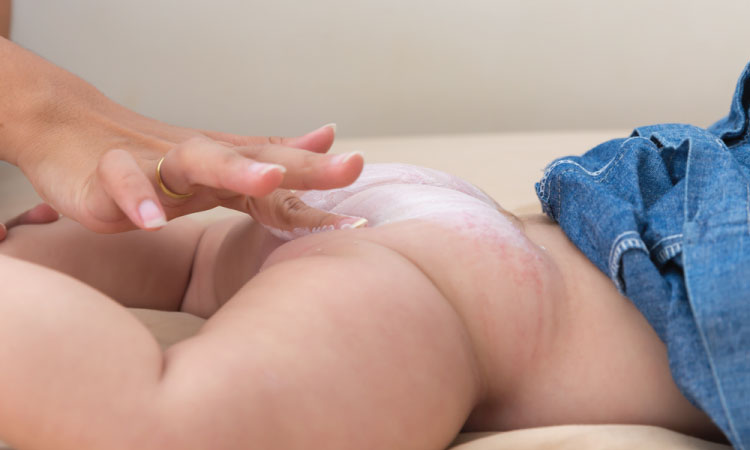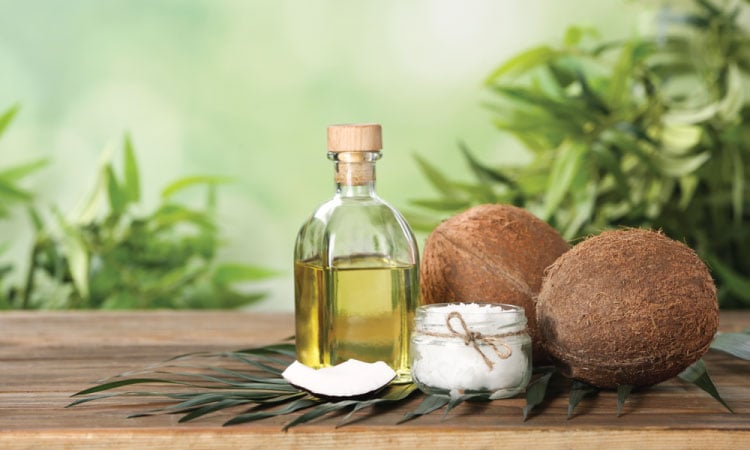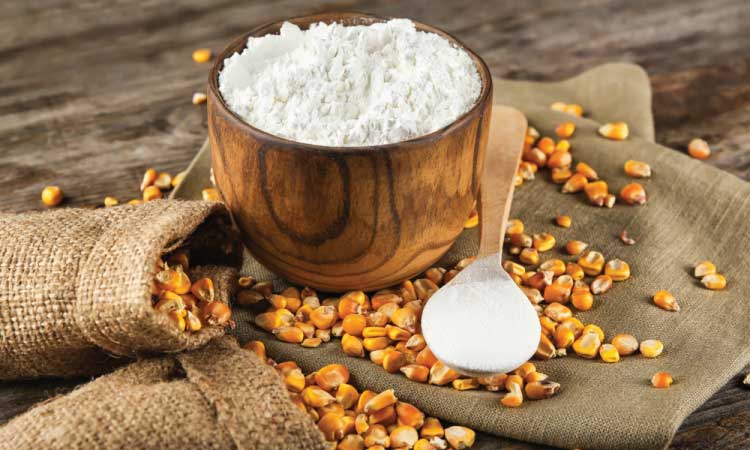Baby diaper rash is a common but uncomfortable skin rash that occurs in infants. Diaper rashes can make a baby very uncomfortable and cause anxiety to parents. To see your baby cranky and uncomfortable is possibly a parents’ worst nightmare. And that’s when they start to wonder if there are any safe home remedies for baby diaper rash.
Treating a diaper rash is quite easy and can be done at home most of the times. Because it concerns your precious little, it is always better to go for a natural solution when it comes to baby diaper rash. This blog provides you 10 safe and effective natural diaper rash remedies to deal with baby diaper rash. But before, let is know what exactly is a diaper rash.
What Is A Diaper Rash?
A diaper rash is a rash that appears on the diaper area of a baby. The rash is usually red in color and small blisters or peelings of skin are visible sometimes. Babies between 9 and 12 months are most vulnerable to diaper rash, which can range from mild to severe.
Babies who already have eczema or other skin conditions tend to be more susceptible to baby diaper rash. Changing diapers will not be an easy task if your baby has a diaper rash. When you clean the diaper area the baby more often appears annoyed and may even cry.
Related Reading: Cloth Diapers Vs Disposable Diapers 8 Reasons To Choose Former
What Causes Diaper Rashes In Babies?
Here are a few factors that could bring about diaper rash in babies.Note thateither one or more than one of these factors can be the reason for baby diaper rash,
1. Antibiotics
Antibiotics kill bacteria regardless of whether they are good or bad. As a result of antibiotic treatment, along with harmful bacteria, good bacteria that prevent yeast growth may also get killed. Consequently, yeast can grow excessively that could end up in diaper rash due to yeast infection.
Babies are also at risk of developing diarrhea if they consume antibiotics. The increased dampness in the diaper area can contribute to diaper rash. Taking antibiotics when breastfeeding can also increase your baby’s risk for diaper rash because most antibiotics can find their way into the breast milk.
2. Dirty diapers
When the diaper is left on for too long, it can potentially invite baby diaper rash. Diaper rash can also result from dampness and acidity in urine and poop. The risk of developing a diaper rash increases when the baby is experiencing diarrhea or loose motions. It is imperative to change baby diaper at regular intervals, say about every 3-4 hours.
3. Wearing tight underpants
Diapers that are too tight prevent air from entering the diaper region, thereby creating an environment that facilitates diaper rashes. The tight-fitting diapers or clothing that rub against the skin also contributes to developing diaper rash.
4. Introduction of new foods
As babies start eating solid food, their stools also begin to change in composition. This increases the risk of diaper rash. The frequency of stools can also increase when a baby’s diet is changed. This can also contribute to diaper rash. Conversely, in breast-fed babies, diaper rash will occur as a reaction to something the mother ate.
5. Irritations and allergies
Baby diaper rash can also be caused by irritation and allergies. Diaper rashes can result from:
- Itching caused by urine and stools
- Chemical induces irritation by soaps, wipes, or laundry detergents
- Certain fabrics, particularly synthetic ones that irritate the skin
- Diapers with dyes or perfumes
When your baby’s skin is irritated after switching brands or trying a new product, an allergic reaction may be at play. Baby might get allergic to:
- Clothing
- Baby wipes
- Baby washes
6. Infections
Another important cause for diaper rash among babies is infection (that can be either bacterial or fungal). The area covered by a diaper (buttocks, thighs, and genitals) is susceptible to infections as these areas tend to remain warm and moist. Bacteria and yeast thrive in this warm, moist environment. That is why these rashes tend to develop within skin crevices.
Related Reading: 10 Best Baby Diaper Brands In India For Your Baby
10 Home Remedies For Baby Diaper Rash- Safe And Effective

If your baby has diaper rash, you should let the baby go diaper-free, which will allow the skin to breathe. This is the best solution for baby diaper rash. Often, this will be sufficient for a mild diaper rash that has just started, but it won’t work for severe diaper rash. For a severe diaper rash, medical intervention is usually required.
To effectively deal with baby diaper rash three criteria must be satisfied;
- Reduce the moisture in the diaper area
- Minimize the contact of the affected area with urine and feces
- Getting rid of infectious germs
There are much cheaper, natural, and effective alternatives to using expensive, chemical-laden diaper cream. Here are some natural diaper rash remedies for baby diaper rash.
1. Breastmilk
Yes, you read it right. One of the unexpected uses of breastmilk is treating diaper rash. According to studies, topical application of fresh breastmilk can effectively heal baby diaper rash. Breastmilk is one of the easiest, most effective, and readily available natural diaper rash remedies. Apply a few drops of fresh breastmilk on the affected area and leave it to dry before each diaper change.
2. Aloe vera
The majority of the home remedy lists will be incomplete without Aloe vera. Many studies have supported that fresh aloe vera gel can effectively improve baby diaper rash as well. Aloe vera is well known for its anti-inflammatory and anti-microbial properties.
Moreover, its alkalizing, cooling, and healing properties are very beneficial for baby diaper rash treatment. Applying this natural gel over the diaper rash helps to:
- Fight the germs
- Cooldown the inflamed skin of the baby
- Promote healing
- Soothe the irritation caused by diaper rash
- It also deeply moisturizes the rash if the underlying cause of the rash is dryness
3. Yogurt for baby diaper rash
Probiotics in yogurt can effectively cure a yeast infection. It can also eradicate the germs that cause diaper rash. Besides, the creamy texture of yogurt forms a layer between the skin and diaper and helps to reduce the friction from the diaper, thereby, speeding up the healing process.
The anti-inflammatory property of yogurt helps to soothe the inflamed skin. Apply a thick layer of the yogurt over the affected area. Leave it on for a few minutes. Then wash it with lukewarm water.
Repeat the process twice a day. You can see the rash starts to subside in a couple of days. This is counted as one of the best yeast diaper rash remedies.
If the baby is old enough to eat solids, besides topical application, include plain yogurt in the baby’s daily menu. This will provide quick results. One point to remember here is to use only plain, normal yogurt at room temperature. Using flavored or sweetened versions will aggravate the rash.
Related Reading: 10 Best Baby Products For Your Baby’s Sensitive Skin
4. Baking soda for baby diaper rash
Baking soda is one of the effective diaper rash remedies for infants. It helps to:
- Disinfect the area by eradicating fungi and bacteria.
- Maintain optimum pH level of baby skin
It is too strong to be applied directly to the baby skin. Instead, it is a very effective cure for diaper rash and is used in a diluted form to wash the baby’s bottom. For this, stir two tablespoons of baking soda into lukewarm water and wash your baby’s rashes regularly with this solution. Allow the skin to air dry. You can see how fast the diaper rash starts to disappear.
5. Coconut Oil

Coconut oil is one of the most effective remedies for diaper rash because of its antibacterial, antiviral, and antifungal properties. Coconut oil works wonders on a baby’s rash caused by dryness, fungi, bacteria, or friction. A regular in many homes, coconut oil is widely preferred for baby massage as well,
Every time after washing the diaper area of the baby (during a diaper change), lightly apply coconut oil over the affected areas. Coconut oil is rich in healthy fats that deeply moisturize the affected area and thereby, prevent further rashes. Apply it as often as necessary until the rash is gone.
You can improve coconut oil’s antifungal properties by adding a few drops of tea tree oil. To every 2 tablespoons of coconut oil, you can add 5 drops of tea tree oil.
Note: Never apply tea tree oil directly to the baby’s skin.
6. Oatmeal bath for baby diaper rash
Several compounds in oatmeal help to sustain the skin’s natural barrier while clearing its pores. The anti-inflammatory properties of oatmeal help to soothe the baby’s diaper rash and relieve its pain and itching. Oatmeal also helps with the pH balance of your baby’s skin. This can effectively curb potential causes of diaper rash.
Allow the baby to soak or play in bathwater containing one tablespoon of oatmeal for 10 minutes. Allow the area to air dry after the baby is taken outside. The procedure should be repeated twice a day for persisting rashes. Alternately, you can use oatmeal bath water to wash the affected area.
7. Apple cider vinegar
According to studies, the antibacterial, anti-fungal, and antiviral properties of apple cider vinegar can potentially inhibit the growth of yeasts like Candida. ACV can also kill bacteria that can potentially worsen the baby’s diaper rash.
A cloth soaked in vinegar can be used to wipe down the affected area or you can pour some vinegar into the baby’s bathwater. For wiping the affected area with ACV, mix one teaspoon of ACV in a cup of water, and with a clean cloth dab it in the affected area.
Note: Even though it is one of the best diaper rash treatments, this is not recommended for more severe rashes.
8. Epsom salt bath
Epsom salt is recognized for its high magnesium content and anti-inflammatory properties. It can effectively soothe any kind of inflammation and irritation. For this reason, Epsom salt is very effective in treating painful and itchy diaper rashes in babies.
Mix half a cup of Epsom salt in baby’s bath water (warm). Let your baby sit and play in it for 10-15 minutes. Follow it up with a bathing session. For better results, Epsom salt bath should be repeated about 2-3 times a week.
9. Chamomile tea and honey
Chamomile tea is an excellent natural remedy for diaper rash. On the other hand, honey is loaded with antiseptic and healing properties. So no wonder the combination of two make the best diaper rash treatment at home.
Take a cup of chamomile tea and add half a teaspoon of honey into it. Mix well and pour it into a spray bottle. After every time you change your baby’s nappy, spray the solution directly on the rash. Before spraying it is mandatory to clean and dry the baby’s bottom. After spraying, wait for it to dry before making the baby wear a new diaper.
10. Corn Starch for diaper rash

To a certain extent, it is the moist condition that causes or aggravates the diaper rash. Therefore, it’s important to keep your baby’s bottom as dry as possible. Cornstarch absorbs moisture very well. After every diaper change, clean your baby properly and carefully sprinkle some cornstarch to their bottom. After that, you can make the baby wear a clean diaper.
Corn starch makes an excellent baby powder for diaper rash. The particles of corn starch are much larger than the regular talcum powder. It is a safe and healthy alternative for talcum powder while changing his diaper.
Conclusion
Diaper rash is quite common among babies. With the help of the home remedies mentioned in this article, you can effectively manage diaper rash in babies. In the meantime, remember to avoid products that can aggravate the baby’s rash. However, if the diaper rash is not subsiding and if its severity is escalating, it is important to seek medical attention ASAP.

